How Fiber Artist Aurora Molina Used Her Weaving Practice to Process an Uncertain Moment
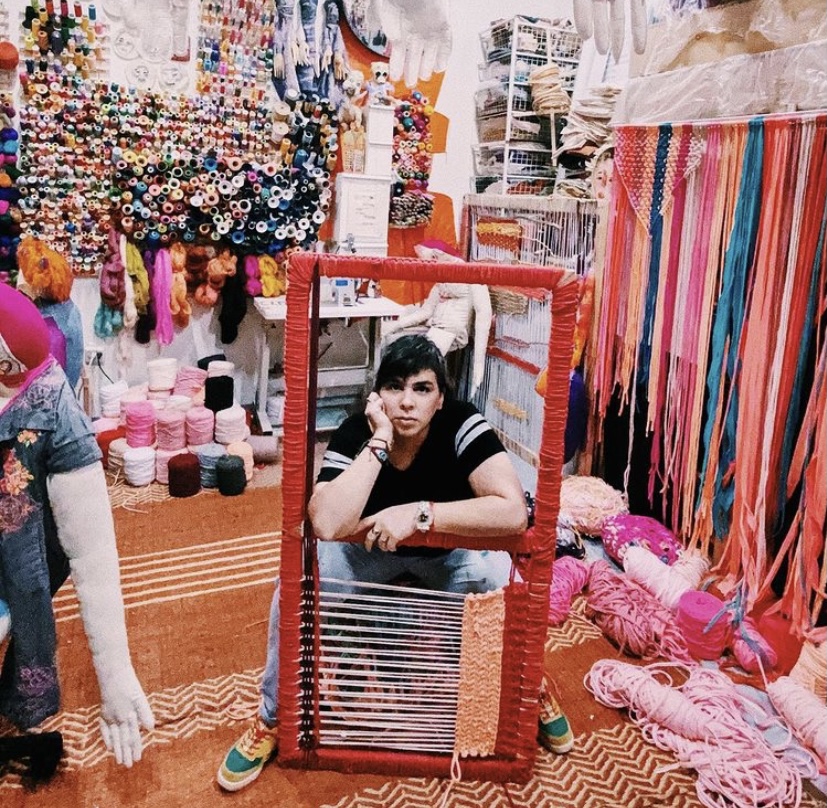

Katie White

Havana-born fiber artist Aurora Molina’s vibrantly colorful works have never shied away from complex themes.
Over the years the Miami-based artist and educator has used fiber-based artworks to grapple with the commodification of beauty and objectification of youth, internet culture, immigration, and politics.
Threads and fibers, she believes, are inherently meaningful, filled with the legacies of women’s work, trade and colonization, and histories of slavery.
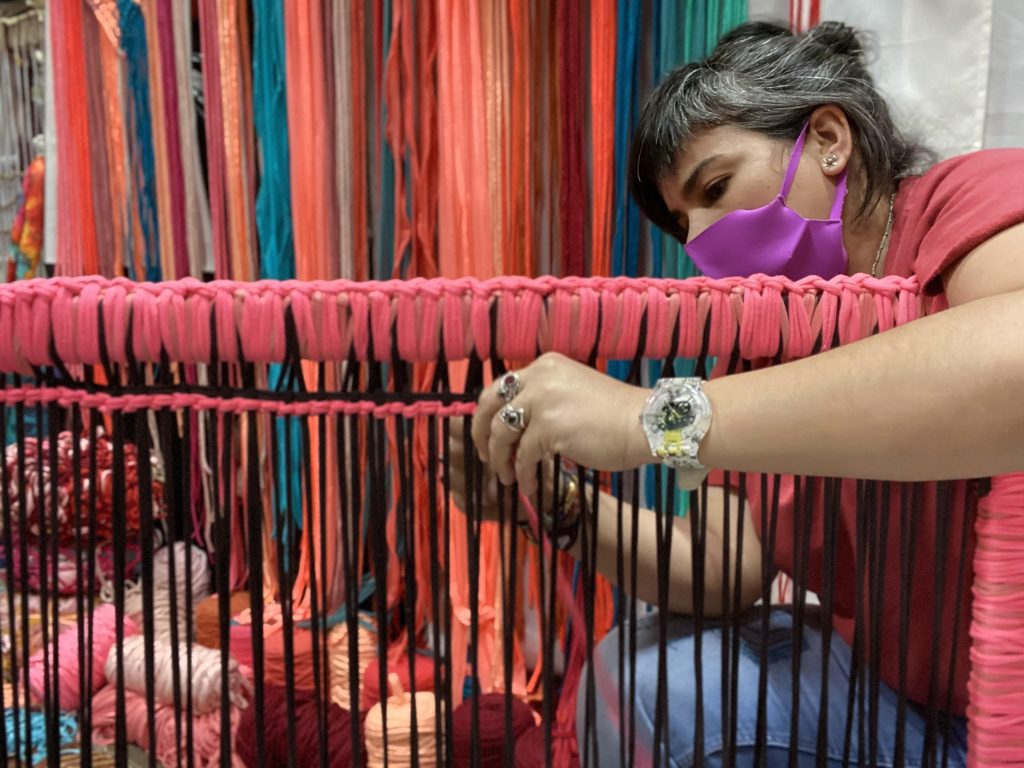
Aurora Molina in her studio. Courtesy of The Camp Gallery.
Nevertheless, last year, in the midst of both the ongoing pandemic and widespread protests against police brutality around the world, Molina felt the need to drop her usual methods of sewing machines and embroidery for hand weaving—a more contemplative and physically laborious process.
These works, made over the past 12 months, are now on view in “The Texture of Grief” at Miami’s the CAMP Gallery. Here, Molina has moved away from her characteristic figurative style and embraced abstraction as a means of conveying the emotions of our time. Bearing names like Quarantine and Isolation, the works possess an uncanny, if unintentional, resemblance to COVID infection graphs.
Weaving, by its nature, is formed by the tensions of the warp and weft. Strands of fiber interlock to build a fabric, with fibers moving with an acute sensitivity to the artist’s body. For Molina, these works are a visual manifestation of both physical and spiritual tensions within herself.
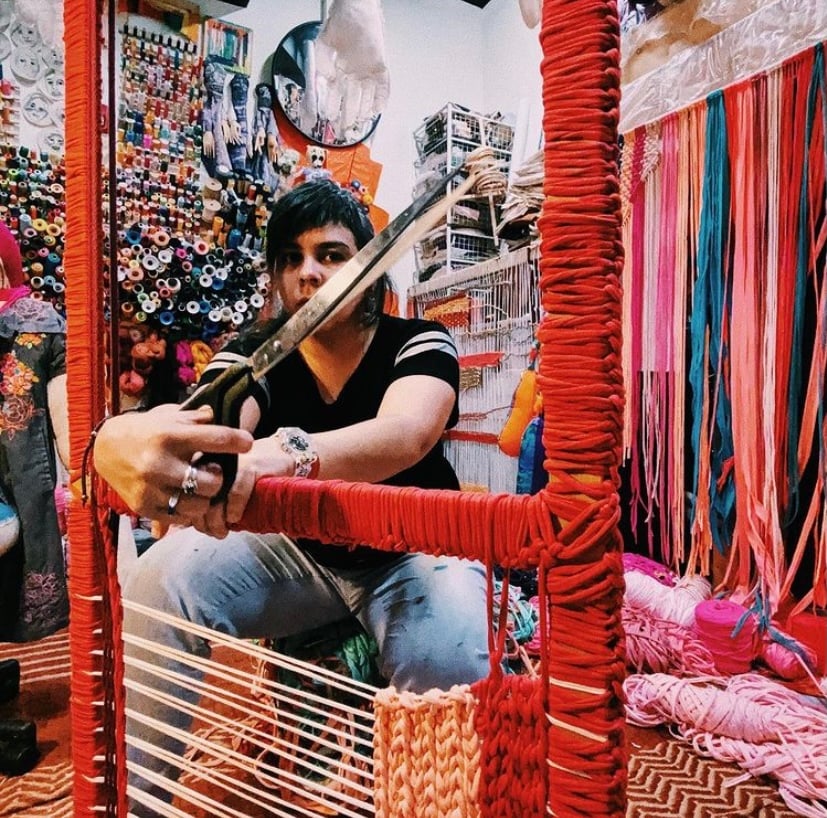
Aurora Molina in her studio. Courtesy of The Camp Gallery.
They are also a reflection of passing time, a common theme in the symbolic history of weaving. The story of Penelope, wife of Odysseus in Homer’s epic poem The Odyssey, inevitably comes to mind: the believed-to-be-widowed Penelope promises to take a new husband when she finishes weaving a burial shroud for her father-in-law, Laertes—and every night she secretly undoes her work, prolonging time.
For Molina, yarn acts as a stand-in for time, while the act of weaving is her way of confronting it. The impulse to distract oneself from the here and now of quarantine, through the process of weaving, becomes, as Molina puts it, part of a “deeper emotional process” in which “the constant rhythm of weaving two distinct sets of yarns (positive thought and negative thought) become interlaced… and the tension of the weaving becomes its own language, and you have to learn how to decipher in relation to your own experience.”
See works from “The Texture of Grief” below.
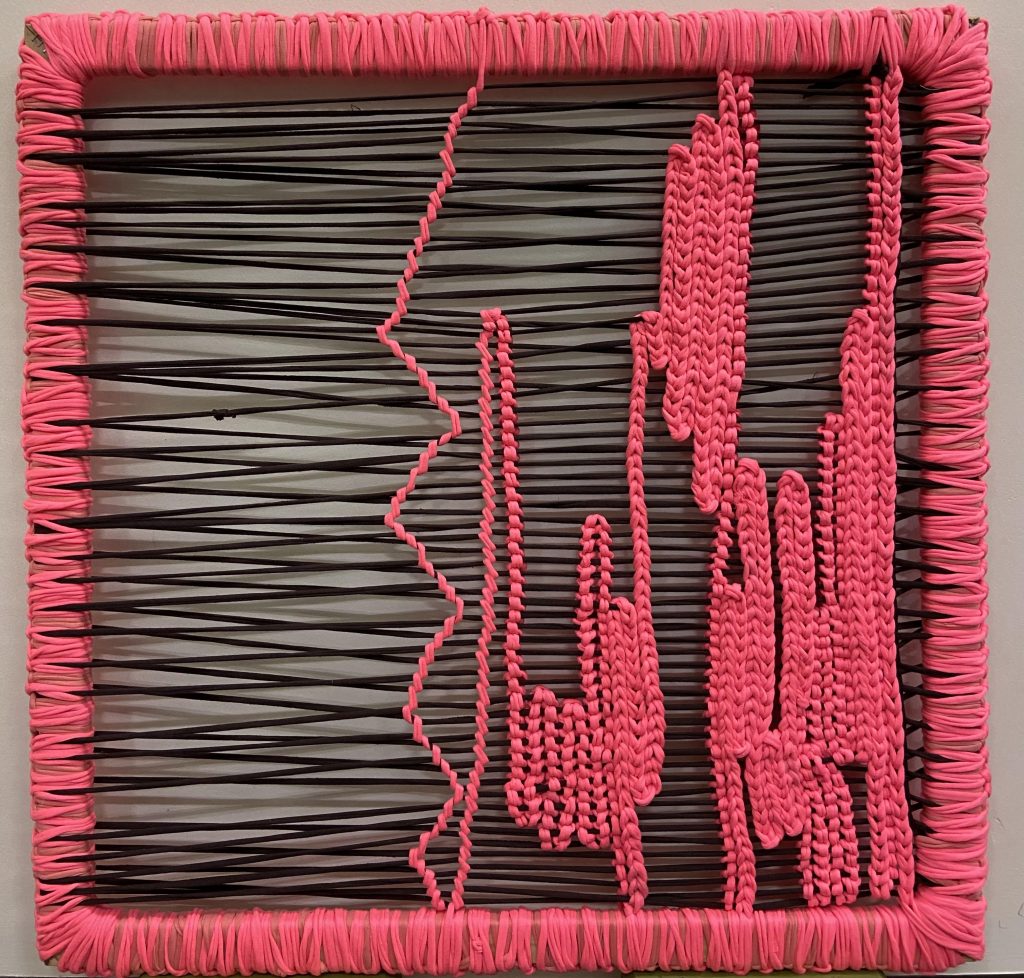
Aurora Molina, Spread (2021). Courtesy of The Camp Gallery.
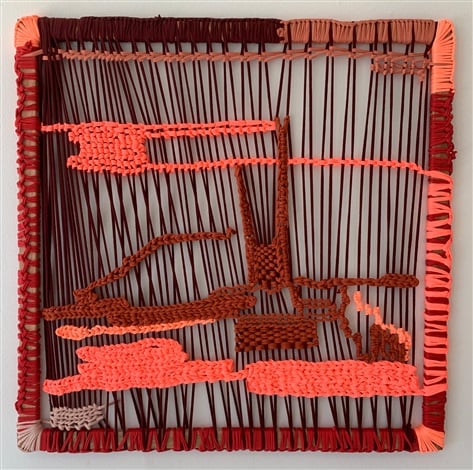
Aurora Molina, Quarantine (2021). Courtesy of The CAMP Gallery.
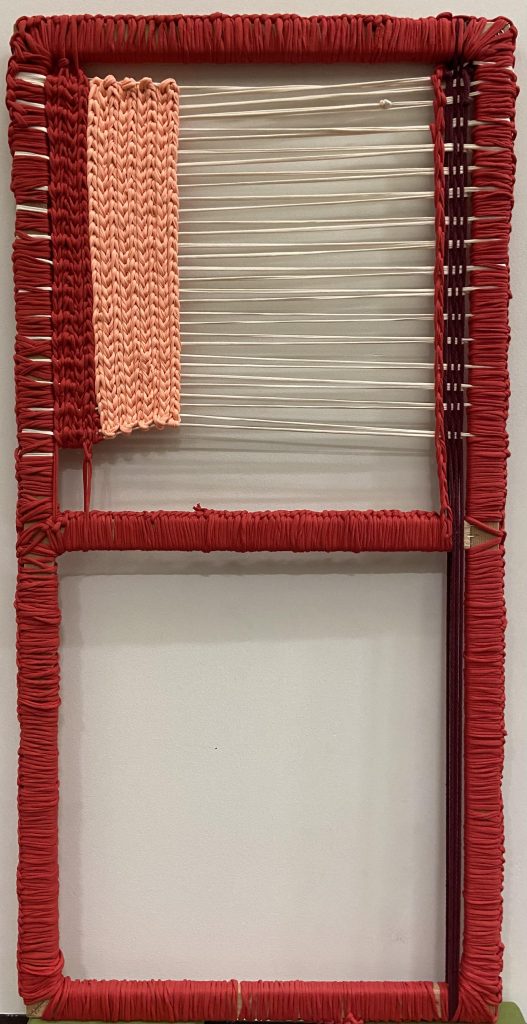
Aurora Molina, Isolation Vs. Peak. Courtesy of The Camp Gallery.
“The Texture of Grief” is on view at The CAMP Gallery, Miami, through March 5, 2021.
